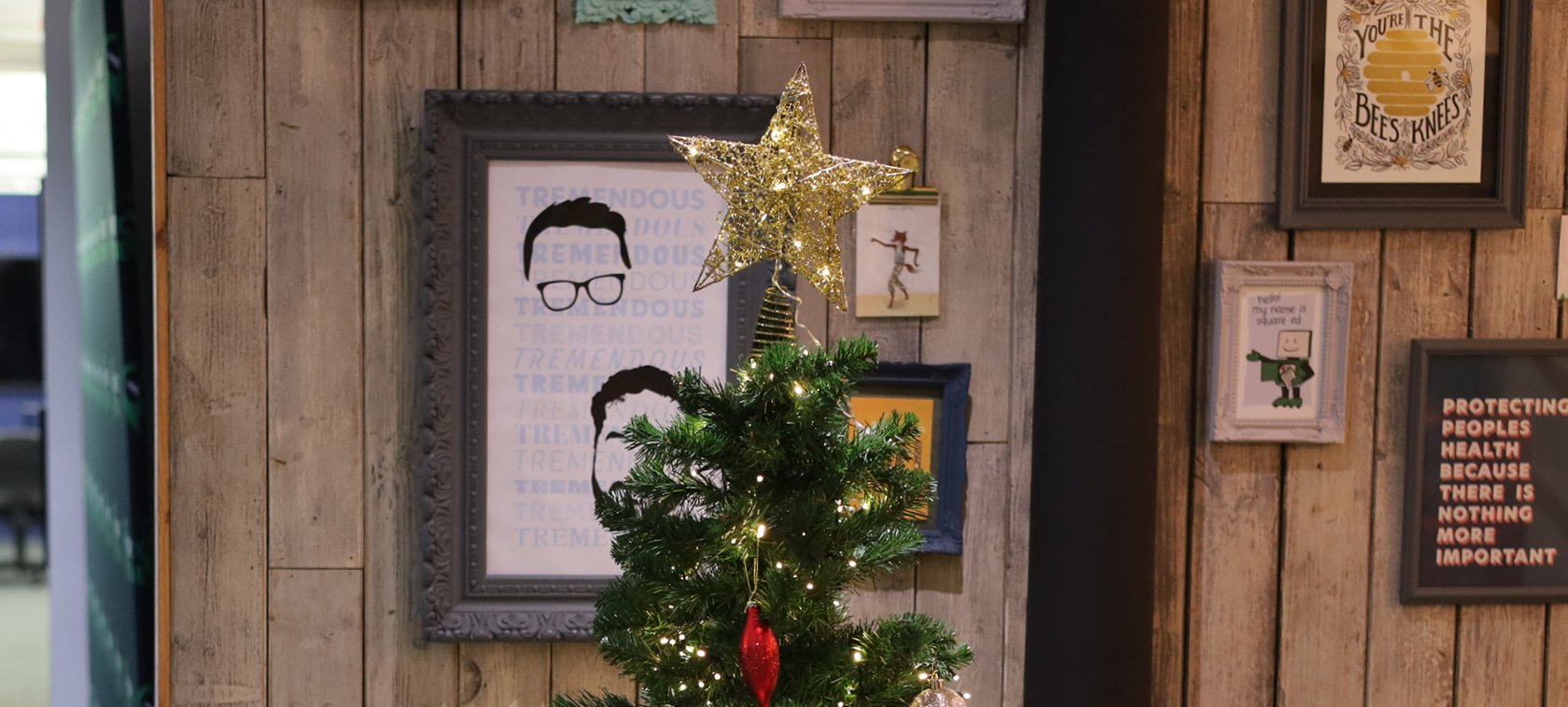Food waste reduction is not a new idea, however, it has gained more traction lately with landfills predicted to reach capacity by 2025. Whilst there has been some light-hearted finger-pointing at popular culture, namely social media, as a contributor in some articles such as ‘Are food Instagrammers really to blame for food waste?’ – the issue is a serious one and one that everyone needs to play a part in solving.
In February, we joined the webinar from The Grocer as part of their #Wastenotwantnot campaign to find out more. The aim of the campaign is to unite the industry, both retailers and manufacturers, to help reduce the huge amount of food waste identified by WRAP, and this was the key message of the webinar – collaboration.
WRAP, the not-for profit organisation with a vision of a world in which resources are used sustainably, are a driving force behind food waste reduction. Their reports into food waste in the home and the supply chain, have led to the creation of the voluntary agreement The Courtauld Commitment 2025 – which aims for ambitious, collaborative action to cut the resource needed to provide our food and drink by one-fifth over ten years.
So, why do we need to act? According to Courtauld 2025, we need to act for a number of reasons:
- More than 2bn extra people to feed by 2050
- Food supply in 2050 could contribute 2°C to global warming
- Right now for every two tonnes we eat, another tonne is wasted
- 8 of the top 10 countries we import food from are drought prone
Not only that, three major WRAP studies published in 2013 and 2016 estimated annual food waste arisings within UK households, hospitality and food service, food manufacture, retail and wholesale sectors at around 10 million tonnes, 60% of which could have been avoided. This has a value of over £17 billion a year, and is associated with around 20 million tonnes of greenhouse gas (GHG) emissions. Around 85% (by weight) of the avoidable food waste arises in households and food manufacture, although waste arising in one part of the supply chain is certainly influenced by other parts of the chain.
WRAP’s CEO Marcus Gover said: “Citizens are wasting one million tonnes less food per year, which means over 8 million tonnes less food waste than when we started tackling this issue in 2007. But it is incredibly challenging to reduce food waste that’s why I’m calling on all businesses, organisations, campaigners and NGOs who work in this area, to unite together in in the fight against food waste. By working together we can win this battle.”
Food waste occurs at every part of the supply chain ‘from farm to fork’, we take a look at the role each sector is playing.
From farm
Farm – According to WRAP, though there is a lack of good evidence for losses in the sector, food waste in agriculture is thought to be attributed to a few different causes including unexpected changes in consumer demand, poor weather and labour shortage. As part of their ethos of ‘shared responsibility from farm to fork’, Tesco aim to prevent this by sharing their forecast with producers and do not cancel orders if forecasts change. Inventively, if a product doesn’t meet specification (such as potatoes) they find use for it elsewhere (in ready meals in this instance) as revealed in The Grocer webinar.
Manufacturing – the food and drink industry is thought to have produced £1.2bn worth of waste and last year was reported to be responsible for the bulk of food waste. Some feel that this is due to quality standards imposed by retailers and consumers so is out of the hands of the manufacturers themselves.
Organisations such as FareShare and Company Shop are also working with stakeholders to ensure that surplus food is redistributed to those who need it most, rather than reaching landfills.
And significant progress has been made by the sector to tackle waste to landfill as demonstrated by the Food and Drink Federation (FDF) who announced today that its members had met the impressive ‘zero food and packaging waste to landfill in 2015’ target in its ‘Five Fold Ambition’, and so helping to contribute to Courtauld targets.
To fork
Retail – According to The Grocer webinar, progress is also happening in the retail sector, but only ‘the only acceptable stat when it comes to food waste is zero’ (Charlotte Carroll, Director of Sustainable Business for Unilever). Steps made towards this date back to 2014, when Tesco ceased to run Buy One Get One Free offers and Sainsbury’s have also banned multi-buys in a bid to reduce potential household waste. Despite these positive steps, WRAP’s research showed that 270,000 tonnes a year of food surplus could be suitable for redistribution, but in 2015 only 47,000 tonnes was actually redistributed.
A common misconception seems to be that the food which is discarded is below quality and out-of-date. Erring on the side of caution, retailers are known to through away food in line with ‘best before dates’ to ensure they comply with food safety regulation. In actual fact, when it comes to ‘best before dates’ compliance is not effected. According to the Food Standards Agency:

So brand protection should be not an issue or an excuse. Again, FareShare and Company Shop are involved in supporting retailers redistribute their surplus food waste. In September 2016, the Evening Standard released a league table ‘ranking the top 10 supermarkets according to the proportion of surplus food they donate to charity for human consumption.’ Sainsbury’s led the way, followed by Tesco and Waitrose. Sainsbury’s being top of the charts is not too surprising after their considerable investment into the Waste less, Save more campaigns and trial in Derbyshire.
In addition to using food waste for charitable purposes, Waitrose has also become the first major European company to use trucks powered by food waste. Last month, Tesco has launched a ‘food waste hotline’ to support suppliers and growers in highlighting areas of waste and work in tackling them.
Hospitality and Food Service – WRAP reports that the ‘cost of food being wasted in the UK from the UK hospitality and food service (HaFS) sector is estimated at £2.5 billion per year in 2011.’ WRAP’s voluntary agreement with the sector ran from 2012 to 2015 and delivered an 11% carbon equivalent reduction (against a target of 5%). An impressive £67 million of food waste was avoided over the course of the agreement. To read more about the work achieved, case studies and examples, see the final report here.
The HaFS sector is included within the new Courtauld Commitment 2025, and WRAP provides a whole host of ideas, advice and case studies to support businesses in implementing food waste prevention, redistribution and recycling, including interacting with service providers who collect waste. In addition to the reasons stated above, from a business perspective there are even further benefits to experience:
- Financial benefits – The World Resources Institute and WRAP recently published a report outlining the business case for tackling food loss and waste, this demonstrated through case studies prevention savings estimated to be on average £14 per £1 invested)
- Helping the environment – reducing the amount of food waste created, increasing the amount of edible food redistributed to humans and reducing the amount of food waste sent to landfills
- Business reputation – consumers are known to be seeking out sustainable businesses
Unilever has also created some practical top tips ‘from chefs to chefs’ ranging from monitoring of portion sizes to specials boards to using off cuts. These work in conjunction with their free-to-download Wise Up On Waste app, for professional chefs to ‘monitor and track your food waste and reduce costs’. Further creative thinking has been shown by events caterer, Seasoned, through their supporting use of ‘wonky’ vegetables in their kitchens.
Household – 7.3 million tonnes of food was wasted by UK households in 2015 (up from 7m tonnes in 2012). Again, the font of knowledge WRAP has some helpful advice to help the general public with their day-to-day managing of food waste in the shape of Love Food Hate Waste including recipes and topical articles.
Why save food at home?
- Slow down global warming and deforestation
- Say goodbye to unnecessary packaging waste
- Potential to save your family £60 a month, that’s £700 a year for an average family of four
“Keeping food out of the bin is good for our pockets and the planet combined.”
– Love Food Hate Waste
Retailers and manufacturers are also doing what they can here by looking at ways of improving packaging in order to aid households in reducing their waste, a move supported by WRAP. Innovations here have included snap-pack sausages from Sainsbury’s and Tesco split packs for chicken breasts – we can’t wait to see what’s next.
For the objectives of Courtauld 2025 to be met, collaboration from all stakeholders in the food and drink industry is imperative to address food waste across all elements of the supply chain from farm to fork. With such a wide array of support available from WRAP, let’s not delay and start making positive changes today. If you are a large business or SME and you would like to find out more about WRAP’s work or how you might get involved with Courtauld 2025, please contact WRAP at courtauld2025@wrap.org.uk.



